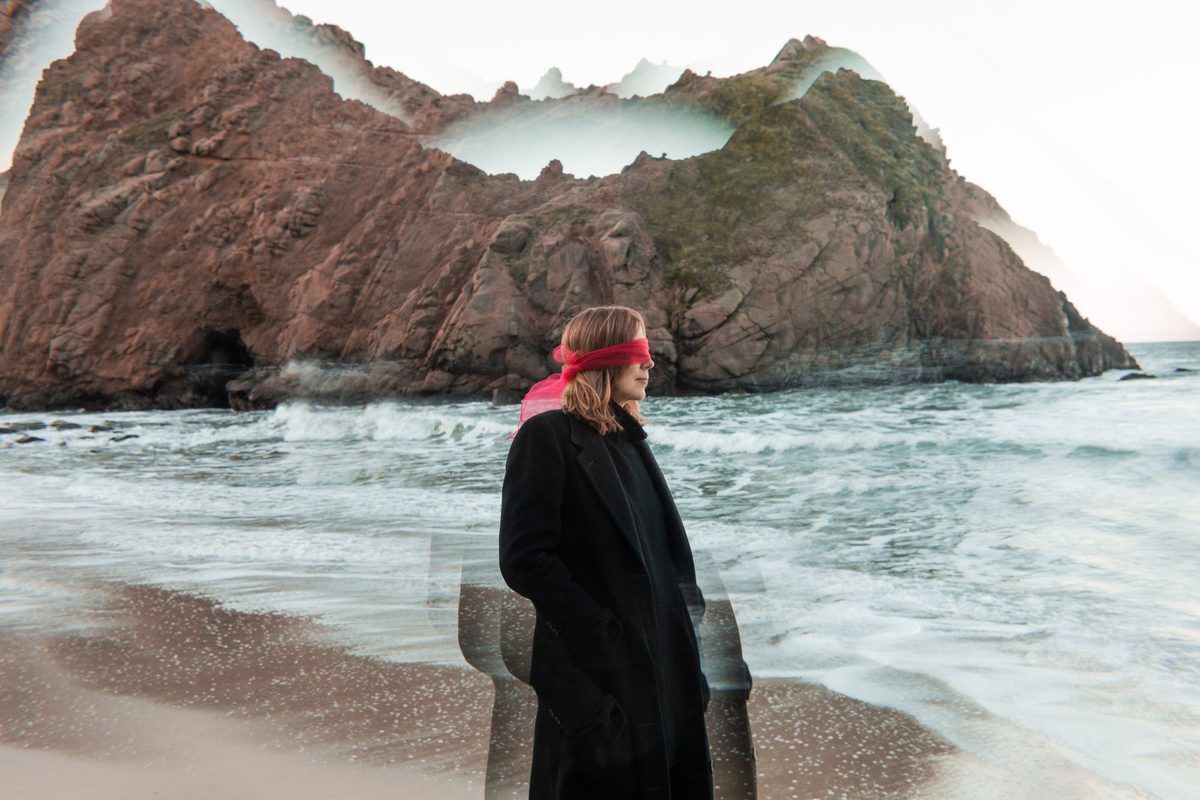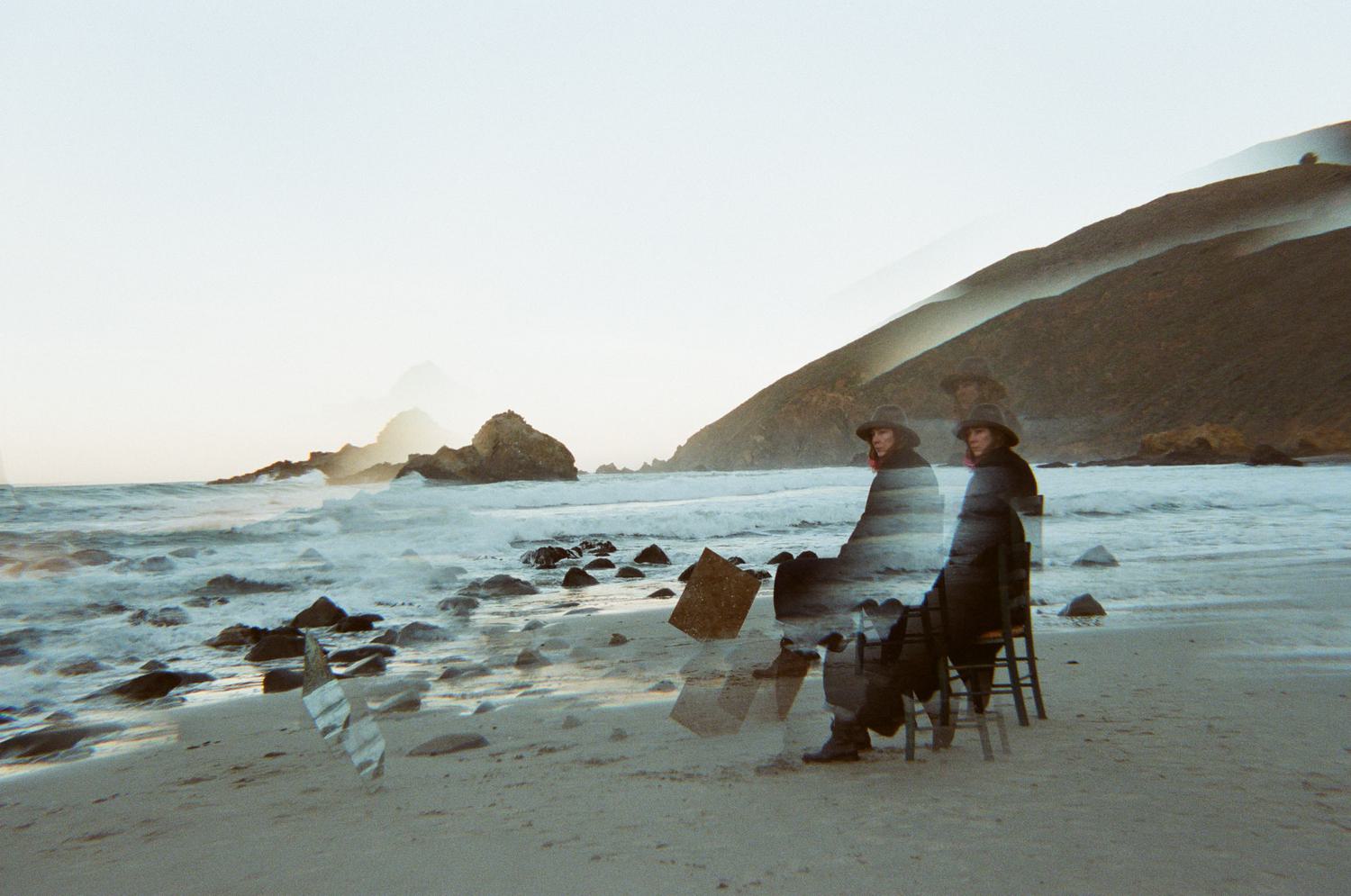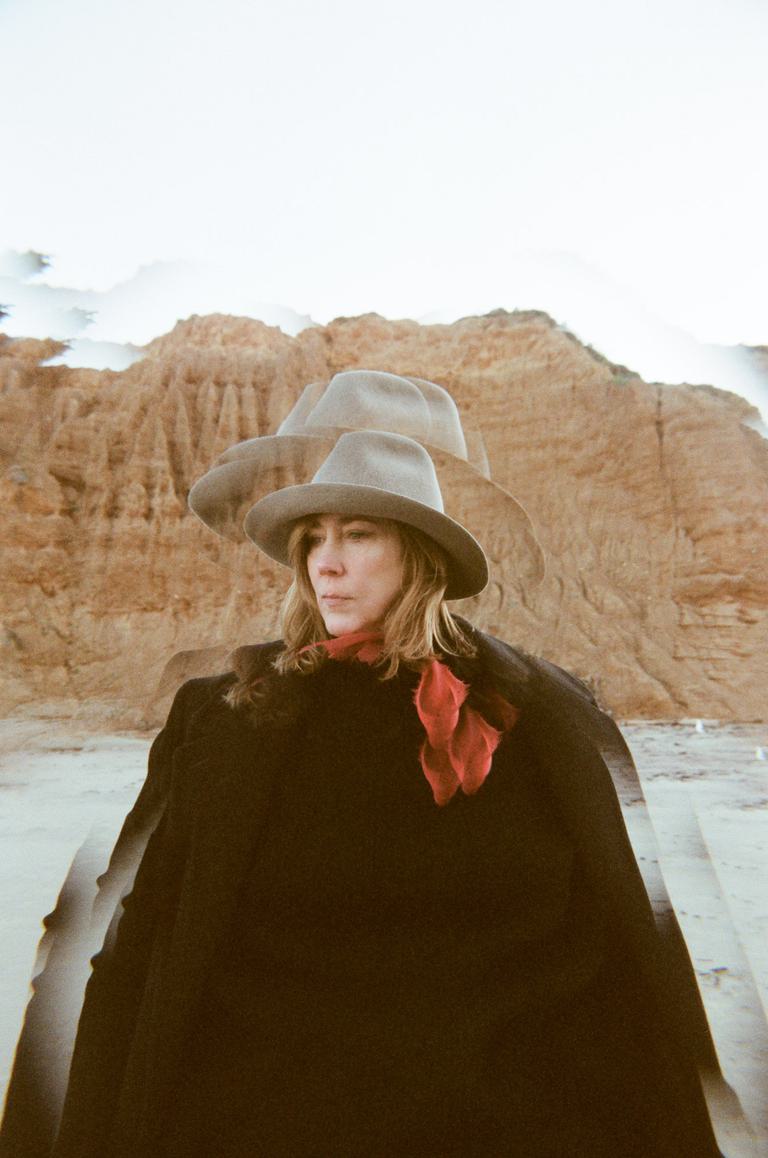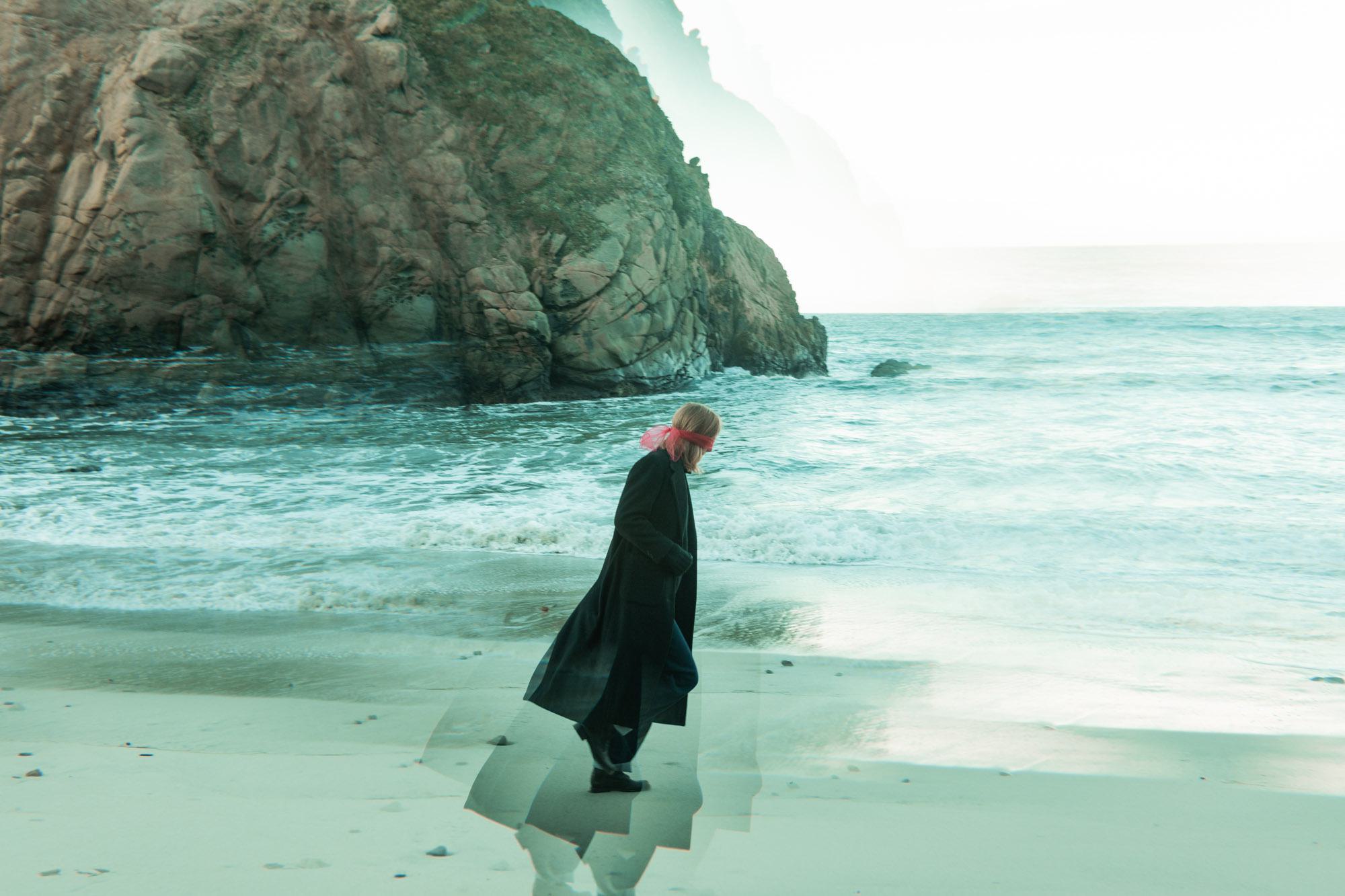
Beth Orton and the strange and sensory world of altered memory
On Weather Alive, Beth Orton lets out rolling waves of emotion through lushly detailed explorations of memory. She talks to Alan Pedder about letting her senses lead her on the path.
In 1922, when the first English translation of Marcel Proust’s In Search of Lost Time was published, the study of memory was more a philosophical topic than a medical one.
A hundred years later, we see memory quite differently. No longer as simply an awareness of past events, but as a dense and still wildly ambiguous system of dynamic processes and storage. Neuroscience has taken the lead, but memory, some say, goes way beyond the brain, beyond the central nervous system, beyond the duality of head versus heart, of thinking versus feeling, of here and now versus there and then. Memory is a moving target; even Proust knew that.
“I don’t think it’s outside the realms of possibility that we are all living on many planes at once,” says Beth Orton, towards the end of our hour-long conversation that takes us from Norfolk to LA to London and into the mystic. “I think there’s something so beautiful and sort of conclusive about seeing things like that.”
It’s almost ten years to the day since we last spoke, in the lounge of a Fitzrovia hotel, where we sat in wing-backed armchairs and chatted over cups of hot tea. This time we’re talking by phone, but I picture her in much the same way: her six-foot-tall frame folded into a comfy seat, her shoulder-length hair in the same shaggy cut, her blue eyes quick to sparkle when she latches on to something that excites her.
Today, that something is the subconscious connections we make when we’re creating and how those manifest and reveal themselves later. “I feel like all art is like a conversation that gets set in motion,” she says, starting to warm to the topic. ”It’s an enquiry that keeps happening and keeps developing, until eventually it becomes its own entity.”
That’s exactly how she feels about her self-produced seventh album Weather Alive, a record that took shape gradually over a span of five or six years. Orton describes it as a challenging time, marked by a series of false starts and setbacks, but also a rewarding one, driven by her unswerving faith in the songs and their need to be served. “After everything that this music has given me, I really wanted to see these songs through,” she says. “It was almost like I was being a doula to this album. Helping it to be born and bringing it to its conclusion.”
It wasn’t common knowledge at the time, but Orton had been experiencing severe cognitive problems during the making of her 2016 album, Kidsticks. Diagnosed with the inflammatory bowel condition Crohn’s disease at 17 years old, she got by more or less through managing her condition with corticosteroids that helped control her flare-ups. But, having lost both her parents by the age of 19, she had plenty of other pain to deal with too, and would self-medicate over the years with alcohol and drugs. The combination of these things, it seems, may have had some kind of neurological impact.
“Since having children I had been having a lot of brain activity that was very confusing,” she explains. “When I would try to remember things it would trigger a seizure. Not the kind where I would black out but complex partial seizures that were more like auras.”

Originally misdiagnosed as panic attacks, Orton at first downplayed the episodes as “funny turns,” but as months turned into years she began to get really concerned. Shortly after she and her husband Sam Amidon moved their family to LA in 2013, the seizures began to get so severe that Orton says she couldn’t really function. There were days when she couldn’t even lift up her head without the world going off-kilter.
At their worst, the seizures made her feel as though she was living overlapping lives. One minute she was a mum cooking dinner for her two kids, the next she felt like she had been yanked into an alternative timeline. “I thought I was fucking psychic! Like, Jesus Christ, I thought I was seeing the future,” she says. “Now I know that the brain can function like a record that skips in time. What’s really happening is that it’s just reliving experiences one step behind what just happened. The whole thing was very complicated, very scary.”
Having spent a lifetime around IBD specialists, Orton says that the mental health world was “like a vortex, a very strange world to suddenly fall into” and describes it as almost comically surreal at times. “I’ve never met more confused people than brain doctors,” she says, with a hint of incredulity. “Gut doctors are so sure of what’s going on but the brain doctors I saw all looked completely freaked out. I was like, surely it should the opposite?!”
Orton’s bewildering experience fed directly into the sound of Kidsticks, a pick’n’mix grab bag of untamed ideas that borrowed from new wave synth-pop, dubstep, experimental jam bands and more. Working as co-producer alongside Fuck Buttons’ Andrew Hung, she describes the sonic clutter of the album as “just full-on brain activity”, recalling the days she spent finishing the record on a laptop in the living room of the house she and her husband were renting.
“When I made that record, it’s almost like I had to do it from the neck up,” she explains. “It was a thinking piece, a practical endeavour. I couldn’t engage my heart or dig too deep into my emotional landscape in order to stay present for the children. So I learned to work in a very specific way, with the kids running around me, and just try to integrate these very opposing lives that I had. It made the world very full and overwhelming.”

Shortly after finishing Kidsticks, Orton and her family moved back to the family home in East London, but rising costs in the area meant that they could no longer afford to live there. Thinking back to her younger years immersed in nature in Norfolk, she found herself longing for a more rural life but, in the end, the schools and her community kept her in the city.
As a compromise, Orton found a rundown flat in Tufnell Park (“sort of the cheap seats of Hampstead”), within walking distance of the Heath. “The place was a fucking wreck, my husband could not believe it,” she says. “But we slowly made the place a home and it turned out to be the best of all worlds, in a way.”
"It's funny, isn't it? Sam and I had our first date on Hampstead Heath. I suggested we meet there, and he brought his banjo and I brought my guitar. We had no idea where that would lead. Often I walk up there and I’m like, that’s the bench.”
By the time the family were able move into the flat, Orton’s seizures were under control with medication, the kids were in school, and her mind turned back to music. “I started to be able to remember things without falling into a hole,” she says. “Memories had become a very precious experience, so it was beautiful and kind of bittersweet to be able to access them without it making me sick. It was like watching home movies in my own head.”
She credits a lot of the progress she made to finding a shabby old piano for sale in Camden Market. Unfazed by the dust and the peculiar resonance in the strings (she later discovered that the case was full of soot), Orton bought it and set it up in the garden shed she was using as a studio. Perhaps it was the muscle memory of making up her own little piano ditties as a child at home in Norfolk, but something about that battered old piano was able to unlock what she describes as “a tsunami of emotion” that had been building up and battened down.
“While my kids were at school I was able to start venturing inside of myself,” she says. “And once I started it was hard to stop. It was sort of a scupper, you know? When there’s water in a boat and you open the scupper and it all just floods out. I mean, I think it was more gentle than that. It just seemed that each time I went to the piano a memory was evoked quite strongly. It felt very atmospheric.”
Proust believed that remembering the past is not about the retrieval of a picture but the act of reliving an event, and Orton seems to agree. “There was a lot of revisiting the past and sort of unravelling the accidents and choices that I’ve made in my life,” she says. “And it was very sensory. I was really very immersed in these memories, in the smell, the taste and the touch and feel of what was gone. It was almost like I was revisiting these key moments for the last time, like I was recording the spirits of those memories into songs and finding a way to hold them in music as they faded.”
Compared to the neck-up methodology of Kidsticks, the writing of Weather Alive was a much more holistic experience. It was less about thinking and more about feeling. Spending hours at the piano became a way of processing the trauma of the past several years. “Whenever the children were away, I was left to kind of go ‘what the fuck? whoa!’, in every fucking respect,” she says. “I don’t think I’ve ever looked at my life in that way, so working through music was this incredibly therapeutic way of sort of feeling my way blindly through all those memories, using my senses to reorientate myself. And it wasn’t like, ‘oh, I’m good.’”
At night, when her memories kept her awake, she’d listen to recordings of the In Search of Lost Time books on headphones. “I liked the fact that I could drift in and out of consciousness and still somehow keep up,” she says. “I found it very calming, that sort of fragmented thinking.”
The experience was so compelling that it even made it into the opening lines of “Friday Night”, a song that finds Orton looking back to her earliest years in London. “It’s a song about drinking and about my best friend when I was 14 who went on to die of alcoholism,” she explains. “We were both really hurting at the time but we were out getting absolutely trashed in the city streets, drinking away the pain. This record is kind of a journey into finding compassion for all these versions of my younger self who were self-medicating in unhealthy ways.”
Given her family roots in low-lying Norfolk with its stretchy light and boundless skies, perhaps it’s inevitable that Orton comes from a similar school of songwriting to Tom Waits, who once proclaimed that “all songs should have weather in them.” Each of her albums is dappled with sun and doused in rain and snow. An unseen wind blows through them, setting autumn leaves and unkempt hair in motion. In one song, clouds are conducted like an orchestra; in another, they knit into a sky the colour and imagined weight of concrete.
Weather Alive takes things several steps further. At times, the songs are so thick with atmosphere it’s almost as though they have some kind of physical presence, a breathing, creaking, invisible body full of space and detail. We know objectively that music is no more a living thing than weather, but sometimes it's hard to be certain.
Having taken some lessons on how to use Logic from London-based studio whizz Francine Perry, whose sonic fingerprints are also on the Keeley Forsyth and Quinquis records from earlier this year, Orton began building on what she describes as little embers of song ideas. In the process, she developed a way of recording the inner workings of her unconscious mind, “sort of recording my own brain patterns through music.”
Afraid that new holes in her memory might suddenly appear, she says she got down pretty much everything while making her first demos – an approach that ultimately paid off when trying to maintain her connection to the original essence of the songs. “I was very aware when writing a song that the first idea would often turn out to be the kernel of it, the blueprint,” she says. “So it was a process of trying to always retain the atmosphere of the song, first on my own and then when pulling in other musicians.”
"I thought I was fucking psychic! I thought I was seeing the future."
The first person she went to was drummer Tom Skinner (Sons of Kemet, The Smile), who, together with his friend Tom Herbert (“an incredible bass player”) went into the studio for a day with Orton to try and flesh out a few of her works-in-progress. The session went so well – album closer “Unwritten” was recorded that day – that Orton immediately wanted to do another three days with them. At the time, she had received an advance from an interested label, who had lined her up to work with an in-demand producer, and things seemed to be finally on track.
Then Covid came along, and Orton and the producer quickly discovered that they weren’t going to get very far with each other by working remotely. “Life kept throwing me back on myself,” she says. “We agreed to come back to the record when we could be together in person, but then the record label dropped me.” She sighs. “Yeah, it was brutal. I was so scared, and also quite depressed by the whole situation. But I realised that the only way to move through those feelings was to actually complete this piece of work.”
Orton still had a bit of the advance left over after being dropped but it wouldn’t be enough to finish the record, so she decided to take out a loan. “I went to Sam and said, ‘I’m thinking of selling the cow for some magic beans, are you alright with that?’. And he said, ‘Yeah, go on then.’”
Self-producing the album was a no-brainer given she was working with tight financial constraints, but it was a conversation with the Grammy-winning producer/mixer Craig Silvey (Portishead, Sharon Van Etten) that gave her the courage to actually do it. “He was so excited about the music and his excitement was so intriguing to me,” says Orton. “He insisted that I should produce it myself and I was like, ‘Are you serious?!’ But I really believed in what the other musicians had brought to the record, so for three months I just locked myself in the shed with everything I had and started to sculpt and shape the songs.”
She worked mostly alone, though she called on Perry to help her with some of the more complex engineering of vocals and New York-based Shahzad Ismaily contributed remotely, providing simpatico rhythms and textures for her to thread into the songs. “Not only is he an amazing musician but he was also a really sensitive and kind friend throughout the whole process,” says Orton. “He knew how close to the wire it was.”

One of the pleasures of listening to Weather Alive – ideally on good headphones while out for a walk – is trying to catch all the different layers at work in the mix. You can’t miss the solar flares of saxophone from Alabaster DePlume and Stuart Bogie, the rainfall vibraphone of Sam Beste, or the autumnal washes of Mellotron and flute from Midlake’s Jesse Chandler, but only the sharpest ears could pick out the sound of Orton’s cough and the creaks of her piano stool. “Craig left all those things in and I was like, dude, you have lost your fucking mind,” she says. “I was so embarrassed to play these songs to people at first because I know how they are all just kind of strung together. I know that some of my processes in the editing were really rudimentary. I mean, it was mostly done in my shed.”
“I read yesterday that Fiona Apple, in all her brilliance, said that her last record was like a burp to her, and I thought that was so funny because this album, for me, was something similar. Like, it was just excruciating to listen to in front of other people. Every bit of it was personal and exposing. Even the music that other people made felt incredibly exposing, because they played with such sensitivity.”
Orton says that she sees the record in terms of geology, “like a biopsy, a slice of Earth where you can see all the layers of sediment and how it was made over time.” Somewhere near the top, just above the mixing layer from the spring of last year, sits a thin black line that represents the mercifully short time that Orton struggled to find a home for the finished record. In the end, it was Tim Putnam at Partisan Records who added the next layer. “He listened to the album and was like, 'this is fucking great!'” she says. “And he was weirdly psychic about it. He told me some of the things he picked up on when he listened to it and I thought, 'how the fuck did you know that?' It was really beautiful and quite unnerving to be seen like that.”
In the press release, Orton describes Weather Alive as “a collaboration with time and with myself,” but she’s quick to clarify that she doesn’t mean to undermine or undercut the involvement of others. “That’s so important,” she says. “What I mean by collaborating with myself is really referring to something that I’ve noticed over my career, that I have often been subliminally pulled by other people’s choices, in directions I wouldn’t necessarily have gone on my own. This time, the question I kept coming back to was, ‘what is best for the songs?’"
“What surprised me with this record was being able to say that I do know what I am doing,” she adds. “Not in an egotistical way, but in the way that I found my own answers when life kept asking me things like ‘What are you?’ and ‘What are you made of?’. Like it was pulling me to make braver and braver choices. And I’m just so fucking grateful on every level, every day. The lesson I feel I’m being taught through the universe is that when you do what only you can do, that’s when something really special happens.”
Get the Best Fit take on the week in music direct to your inbox every Friday

Lorde
Virgin

OSKA
Refined Believer

Tropical F*ck Storm
Fairyland Codex





